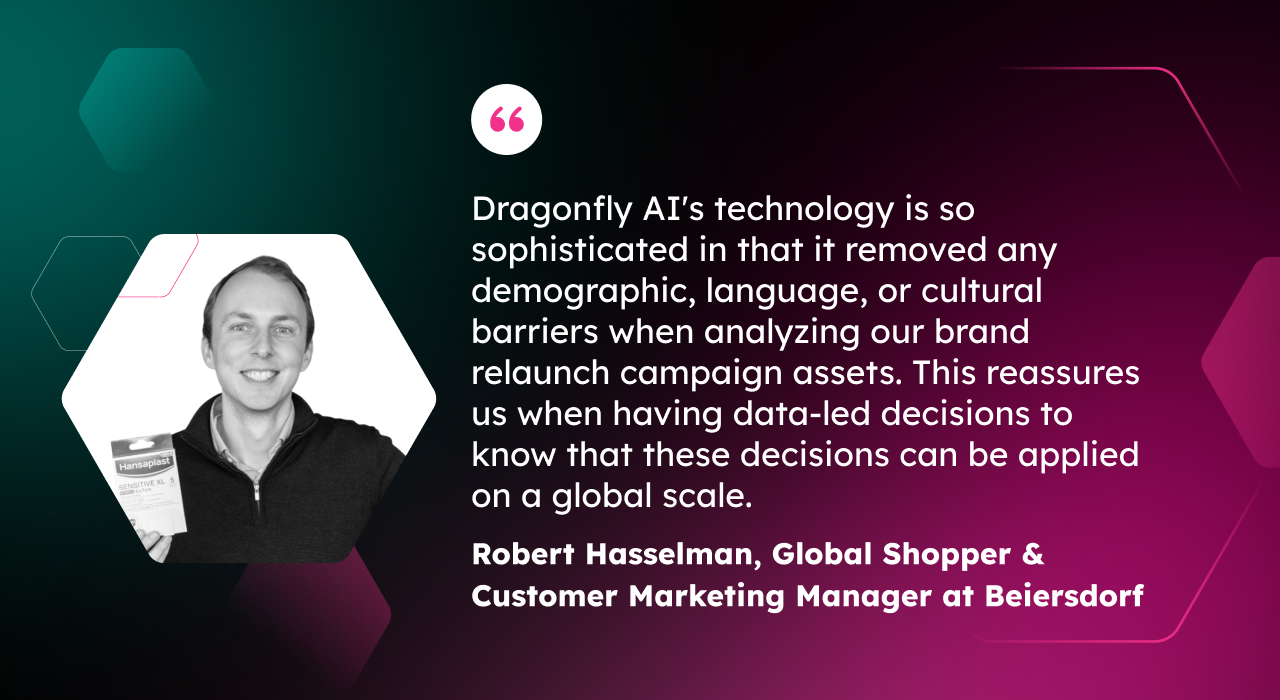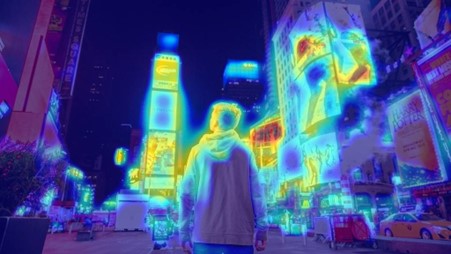Conversion rate optimization lives and dies by understanding customer attention. Dragonfly AI makes that easier, using visual analytics to show exactly what people see, and what they overlook. Here’s how some brands have used Dragonfly to sharpen their CRO, turning insights about attention into tangible results.
Global healthcare brand
When a leading global consumer healthcare company wanted to improve visibility and sales performance of its oral care products in physical retail spaces, it recognized the importance of attention and visual saliency to drive conversions.
Identifying the visibility problem
Using Dragonfly, the brand came across visibility issues with its products on retail shelves. Specifically, despite holding 65% of the oral care market, its toothpaste products only occupied 30% of the shelf space at consumer eye level, which limited its ability to attract attention.
Implementing targeted adjustments
With insights provided by Dragonfly’s visual analytics, the brand tested several placement strategies – such as vertical product arrangements and horizontal brand blocks – to identify optimal positioning for its toothpaste and toothbrushes. Adjusting product placement so it matched where customers naturally look made all the difference in turning visibility into real sales.
Strong, measurable outcomes
Product repositioning had a tangible impact on performance:
- The brand achieved a 7% growth specifically in toothpaste sales.
- Overall market share within oral care increased by 1.4%.
- The visibility of toothpaste products improved by 5.7%.
Better shelf placement paid off in a big way, making the brand the top toothpaste supplier for the first time, and clearly proving that grabbing attention leads directly to more sales. The case clearly illustrates how data-driven insights can turn smarter shelf placement into stronger conversion rates.
Birdseye
Birdseye is a well-known frozen food brand that realized its packaging wasn't standing out clearly enough in busy supermarket aisles. With competition tight, attracting attention over similar products became the brand’s number one priority.
Identifying areas for improvement
Birds Eye partnered with Dragonfly AI to see exactly where shoppers were (and weren’t) looking. The AI analysis highlighted issues with visibility and branding consistency across their product range, giving Bridseye food for thought.
Making clear, impactful changes
Working with insights from Dragonfly AI, Birdseye redesigned its packaging to become more visible and easier to navigate on busy supermarket shelves. The brand made sure its iconic red leaf logo was consistently placed at the top of every pack, which acted as a clear visual anchor for shoppers. Messaging was simplified too, prioritizing essential information like cooking times, nutritional details, and sustainability claims. It meant customers could find what they needed faster.
The impact: more eyes, more sales
The redesigned packaging was instantly more effective:
- Visibility improved by 26% against competitors.
- Products had a 45% better chance of grabbing customer attention.
- Year-over-year sales volume increased by 1.9%, with overall value growth of 0.7%.
.png?width=1280&height=700&name=Blog%20image%2013%20(5).png)
Attention drives results
The Birdseye case proves one simple point: clearly visible packaging means more shoppers noticing – and ultimately buying – your products.
Optopus
When Optopus wanted to improve client sales, it didn’t rely on guesswork or gut feel. Instead, the digital agency focused on improving the online experience turned to Dragonfly AI to refine how their product visuals performed online.
Spotting issues early
With Dragonfly AI’s analytics, Optopus was able to identify weaknesses in product images – specifically those designed for mobile shopping. It highlighted visuals that weren’t attracting customer attention or clearly communicating their value, meaning Optopus could pinpoint exactly where changes were needed.
How Optopus used the insights
Optopus completely rethought how images communicated its core message. For instance, logos and key product benefits were placed in areas identified by Dragonfly AI as high-attention zones, so shoppers noticed the need-to-know details immediately. It also simplified images and removed unnecessary clutter that distracted from the main message.
Real impact for clients
The improvements were fast and resounding. Optopus’s refined visuals directly improved its clients’ online conversions, which led to a substantial increase in sales of up to 40%.
Silvia Aguilar, CEO & Creative Project Lead at Optopus, summed it up clearly:
"Dragonfly AI lets us see through the eyes of shoppers, helping us understand if our visuals truly resonate in an instant. Clients who embraced this data-driven approach saw sales improvements of as much as 40%."
Results that matter
Rather than simply tweaking images, Optopus demonstrated how targeted, data-informed decisions lead to meaningful business outcomes.
Beiersdorf
When Beiersdorf set out to relaunch its Hansaplast, Elastoplast, and CURITAS brands globally, consistency was the primary driver. It needed to ensure that its "Bacteria Shield seal" – a crucial element communicating the product's protective benefits – was prominently featured across all marketing materials.
Maintaining visual consistency across markets
Coordinating a worldwide brand relaunch is no small feat. With countless assets to produce and multiple stakeholders involved, maintaining a consistent visual hierarchy becomes a serious challenge. Beiersdorf recognized that without a data-driven approach, subjective decisions could lead to inconsistencies and dilute the brand's message.
Implementing Dragonfly AI's insights
To tackle this, Beiersdorf integrated Dragonfly AI into its creative process. Analyzing point-of-sale materials and other campaign assets meant it could predict which elements would capture consumer attention first. This allowed them to:
- Position the "Bacteria Shield seal" to make it the focal point.
- Structure visuals so that the logo, shield, and headlines stood out in the intended sequence.
- Remove subjectivity from design decisions, relying instead on predictive analytics.
A cohesive and effective global campaign
With Dragonfly AI's guidance, Beiersdorf achieved a standardized visual approach across all markets. The "Bacteria Shield seal" captured consumer attention and reinforced the product's key benefit. Taking a data-backed strategy not only streamlined the creative process but also enhanced the effectiveness of their global campaign.

The right outcome
This case underscores the power of integrating AI-driven insights into the creative process, ensuring that key brand messages resonate consistently across diverse markets.
Attention pays
These examples show that turning customer attention into tangible results isn’t guesswork. With Dragonfly AI, brands consistently make smarter, insight-driven design choices that lead to clearer messaging, higher visibility, and measurable boosts in conversions and sales. Because understanding attention is the smartest way to grow your business.
